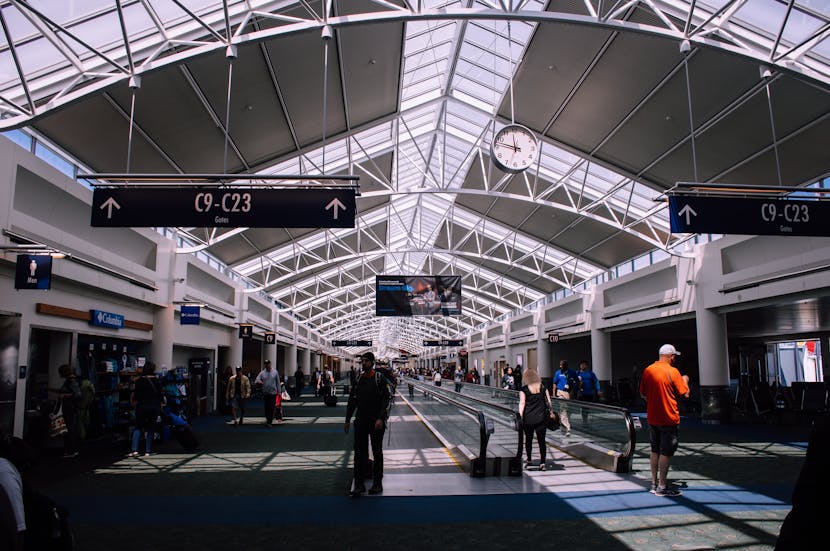- by foxnews
- 04 Feb 2025
How Heathrow, Seattle-Tacoma (SEA), Chicago O'Hare, Sydney Airport, John F. Kennedy International Airport (JFK), Dubai International Airport (DXB) Are Enhancing Accessibility for Visually Impaired Passengers with Advanced Technology and Personalized Services
Airports have always been bustling centers of movement, packed with passengers navigating through terminals, security checkpoints, and boarding gates. For visually impaired travelers, the complexity of these environments presents additional challenges. However, in recent years, airports around the world have significantly stepped up their efforts to enhance accessibility for visually impaired passengers. With personalized assistance, innovative technology, and thoughtful design improvements, airports are working to ensure that visually impaired travelers can enjoy a seamless and stress-free experience from check-in to departure.
- by travelandtourworld
- 21 Sep 2024
- in travel

Airports have always been bustling centers of movement, packed with passengers navigating through terminals, security checkpoints, and boarding gates. For visually impaired travelers, the complexity of these environments presents additional challenges. However, in recent years, airports around the world have significantly stepped up their efforts to enhance accessibility for visually impaired passengers. With personalized assistance, innovative technology, and thoughtful design improvements, airports are working to ensure that visually impaired travelers can enjoy a seamless and stress-free experience from check-in to departure.
As the gateway to global travel, airports are critical touchpoints for all travelers. For visually impaired passengers, navigating the fast-paced and often overwhelming airport environment can be daunting. Common challenges include finding the check-in counter, passing through security, locating boarding gates, and accessing amenities like restrooms and restaurants.
Historically, visually impaired travelers have relied heavily on human-led services for assistance. While these services are essential and continue to play a major role, modern technology is revolutionizing the way airports support these passengers. Airports are increasingly integrating advanced tools that combine human assistance with technological innovation, providing visually impaired travelers with more independence and a more comfortable experience.
Many airports now offer specialized support services designed specifically for visually impaired passengers. These services typically begin as soon as the traveler arrives at the airport, with staff trained to guide passengers from check-in to boarding. Airlines and airports often encourage visually impaired travelers to request assistance at least 48 hours in advance, ensuring that staff are available to provide help with navigating check-in kiosks, security lines, and boarding procedures.
While personalized services are invaluable, the introduction of cutting-edge technology is pushing airport accessibility to new heights. Airports around the world are integrating technological tools that offer real-time navigation assistance, making it easier for visually impaired passengers to independently navigate terminals.
One of the most innovative solutions currently being tested in airports is the use of interior navigation apps such as Aira and GoodMaps. These apps are designed to provide real-time audio guidance to help visually impaired travelers navigate complex airport layouts.
Both of these apps are game-changers in airport accessibility, offering visually impaired travelers greater autonomy. By providing audio cues and live support, Aira and GoodMaps empower passengers to navigate terminals with confidence, reducing their reliance on assistance staff and giving them more control over their travel experience.
Airports like Dubai International Airport and Tokyo Narita Airport have adopted tactile paving in their terminals, ensuring that visually impaired travelers can safely navigate busy spaces. Similarly, many airports have begun installing raised signage that can be easily felt and read by visually impaired passengers. This includes Braille signs for important areas like restrooms, check-in counters, and boarding gates, making it easier for passengers to locate essential services.
The integration of both human assistance and technology is key to creating an inclusive and accessible airport environment. While technology offers visually impaired travelers the independence to move through the airport on their own, human-led services provide a safety net, ensuring that no traveler is left without the support they need.
Staff training programs have also been enhanced to focus on the needs of visually impaired passengers. Airlines such as Qantas and Virgin Atlantic train their staff to effectively communicate with passengers who have visual impairments. This includes providing clear verbal descriptions of important safety procedures, helping passengers locate their seats, and ensuring they understand emergency protocols. Some airlines, like Virgin Atlantic, go the extra mile by training staff to assist passengers traveling with guide dogs, offering them hands-on experience and best practices for handling service animals.
As airports continue to evolve, the future of accessible travel for visually impaired passengers looks promising. With ongoing advancements in technology, the integration of new tools and services is likely to become more widespread, ensuring that visually impaired passengers have access to the same level of comfort and convenience as any other traveler.
Transportation.gov). The DOT has also proposed new regulations to ensure that airports and airlines are fully compliant with accessibility standards, ensuring a more inclusive travel experience for all.
Looking to the future, several emerging technologies hold great promise for improving airport accessibility. Smart glasses, for example, are being developed to help visually impaired travelers better navigate airports. These glasses use cameras and sensors to detect obstacles and provide real-time audio feedback, allowing users to move freely and avoid hazards. Such innovations could further reduce the need for human assistance, offering even greater independence to visually impaired travelers.
Beyond technology, future airport designs are expected to place an even greater emphasis on accessibility. Universal design principles, which aim to create spaces that can be accessed and used by all people, are becoming increasingly popular in airport architecture. This approach focuses on designing terminals with wide corridors, clear signage, and intuitive layouts, making it easier for visually impaired passengers to navigate without needing extensive assistance.
With the introduction of innovative technologies like Aira and GoodMaps, coupled with human-led services and physical design improvements, airports are making significant strides in improving accessibility for visually impaired passengers. By providing both independence and support, these advancements ensure that visually impaired travelers can enjoy a smooth, stress-free journey through even the busiest of airports.
As airports continue to evolve and embrace new tools, visually impaired passengers can look forward to a future where air travel is not only accessible but enjoyable. Whether through real-time navigation apps, tactile paving, or personalized assistance, the world of air travel is becoming more inclusive, opening the door to new experiences for all travelers.
- by foxnews
- descember 09, 2016
Travelers flock to top religious landmarks deemed 'most Instagrammable'
Travelers visiting religious landmarks across the world may see a photo opportunity that's worthy to share on social media. Here are 10 popular spots, plus some attractions in the U.S.
read more




